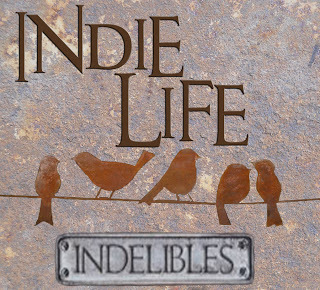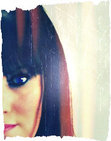the feeling of freedom

It's time for another "Indie Life" post--part of a great series being hosted by The Indelibles! Check out the other blogs that are participating below!
One of my absolute favorite things about being an indie is having complete and utter freedom over what I write and how I present it to the world. I've always had typical only child syndrome--meaning that I don't like to work with others and prefer to do things my way, all by myself. And yeah, that means I was never really great at group projects in school--I was always the kid pulling the teacher aside and begging to do it myself. There's just something supremely satisfying to me about taking a project on and putting my whole heart--and only my heart--into it to make it great. Plus, I would always, ALWAYS get stuck with the somewhat "lazy" kids who knew that I was somewhat of a goody-goody and would pick up their slack. It never failed.
So when it came time for me to make a decision about which way I wanted my writing career to go--keep fighting to work with the group or just take the project on myself--I chose the latter. I chose the freedom. And I love it.
So for those who are considering going indie, I want to talk about a few of the freedoms that I personally cherish--those freedoms that would most likely be non-existent if I were to publish traditionally. Who knows, maybe they're freedoms that you will cherish as well.
1. Freedom to choose my own book cover.
There's nothing that I detest more than trendy book covers--and the YA shelves are teeming with them right now. Particularly the "Big Faces" and "Girls in Pretty Dresses" (forever young adult gives some hilarious descriptions of these trends and they always call them out). I get it--they sell books. Teen girls are drawn to elegant dresses and well-made-up faces. But the same-ness of them all just kills me. A book cover is a chance to really give potential readers a glimpse at the story--its themes and characters and what the world as a whole entails--in a fresh and creative way. And I just don't get that from many book covers these days.
It's a common fact that many big publishing houses just don't have the time to give each and every book on their list the time and attention it deserves when it comes to creating a dynamic cover. Unfortunately many mid-list books get a graphic designer who may spend about a day combing through stock images and picking one that randomly may line up with something in the story. It sucks that this happens, but it's a reality--one of my absolute favorite YA novels has a teen of American Indian decent with long, stick-straight black hair as the main character, yet the "big face" on the cover depicts a blue-eyed, California-tanned girl with blonde beachy waves. It couldn't be more obvious that this graphic designer had absolutely no clue as to who the main characters were or what the story was about. That sucks for the author who poured her everything into creating such a gorgeous story.
Going indie means having complete control over your book cover. You can go with dramatic photography (my favorite), beautiful typography, or unique illustrations. With the help of a great freelance designer, you can bring your wildest ideas to life, and create a book that is truly your own.

2. Freedom to write the story I want.
Before I decided to publish myself, I had several agents and freelance book editors read over two of my manuscripts. And while I did get some great advice that helped make my book better, I found myself more turned off by their advice and whispering "no f-ing way" to myself. I remember one editor in particular who pushed on me that the dystopian novels were "selling like crazy," and if I wanted to really get my book to sell I would change my setting to that of a "futuristic world." I wanted to scream out NOT EVERYONE WANTS TO READ DYSTOPIAN NOVELS! in her face but instead I just politely thanked her for her help and tossed out about 80% of her notes. I don't dislike dystopian novels--there are some amazing ones out there--but I feel it is becoming entirely too trendy in today's flooded market, especially the YA market. Many agents and editors think that novels need to be dystopian to sell--much as the vampire and werewolf trend came around several years ago--and that they will make instant money. That's the unfortunate part of publishing traditionally--while you may want to sell a quiet story that is full of heart, they may want to sell a story that is guaranteed to make them money. It's too risky these days for them to bet on anything but a sure thing.
But when you self-publish, you don't have to give a damn about trends. You get to write exactly what you want--which in my case consists of those quiet, contemporary stories that are full of heart.
It's another fact that when you publish traditionally, you must be ready and willing to change everything that your editor wants you to. Granted I'm sure there is some give and take when it comes to ideas, but overall, the editors are in control now. It's terrifying for me to imagine handing over my story that I worked so hard on to make it all my own to someone with a lethal red pen; to let the fate of everything rest in the hands of a relative stranger. Self-publishing allows me and only me to be the final say on what happens in my story, and I get to keep all of my ideas intact.

3. Freedom to market my book in whatever "category" I choose.
Since I started dreaming up story ideas in my head many, many years ago, they've always been about college or post-college kids--around 18-22--dealing with the general life situations that come about with that time period of growth. I didn't really choose this makeshift YA category, it's just what found me. It's where my heart is, and for years, I tried to fight it. Because technically, it's not a "real" category in the publishing world. "Books about college kids don't sell," they say. "There's just no market."
I had one novel in particular that I shopped around to agents for well over a year, only to hear over and over again that it was "too old for YA" yet "too young for Chick Lit." It was nearly impossible just to get someone who was willing to read the damn manuscript after they learned in my query letter that the main character was an 18-year-old college freshman. The only response I got from many was that I needed to "age the main character down" and "make her a high school student." It was one of the most frustrating experiences of my life.
Luckily, there are other people out there in my very same shoes, and the category of "New Adult" literature has become a relevant one over the past year or so thanks to those brave indie authors who said "damn the man" and published their previously un-categorizible books all by themselves. And guess what? There's people who want to read them! Lots of people! And the publishing world is finally starting to take notice and put the pieces together--maybe this is a viable category.
So when you publish yourself, you don't have the annoyance of trying to categorize your book. You can simply write the story that's knocking at your brain, no matter how old or young or tall or small or dark or light or nice or evil those characters are. Because there's an audience for it. And they'll love it.

Thanks for stopping by! I love the opportunity to talk openly about indie life with so many talented and brave authors! Check out some others!
Published on February 13, 2013 10:35
No comments have been added yet.



